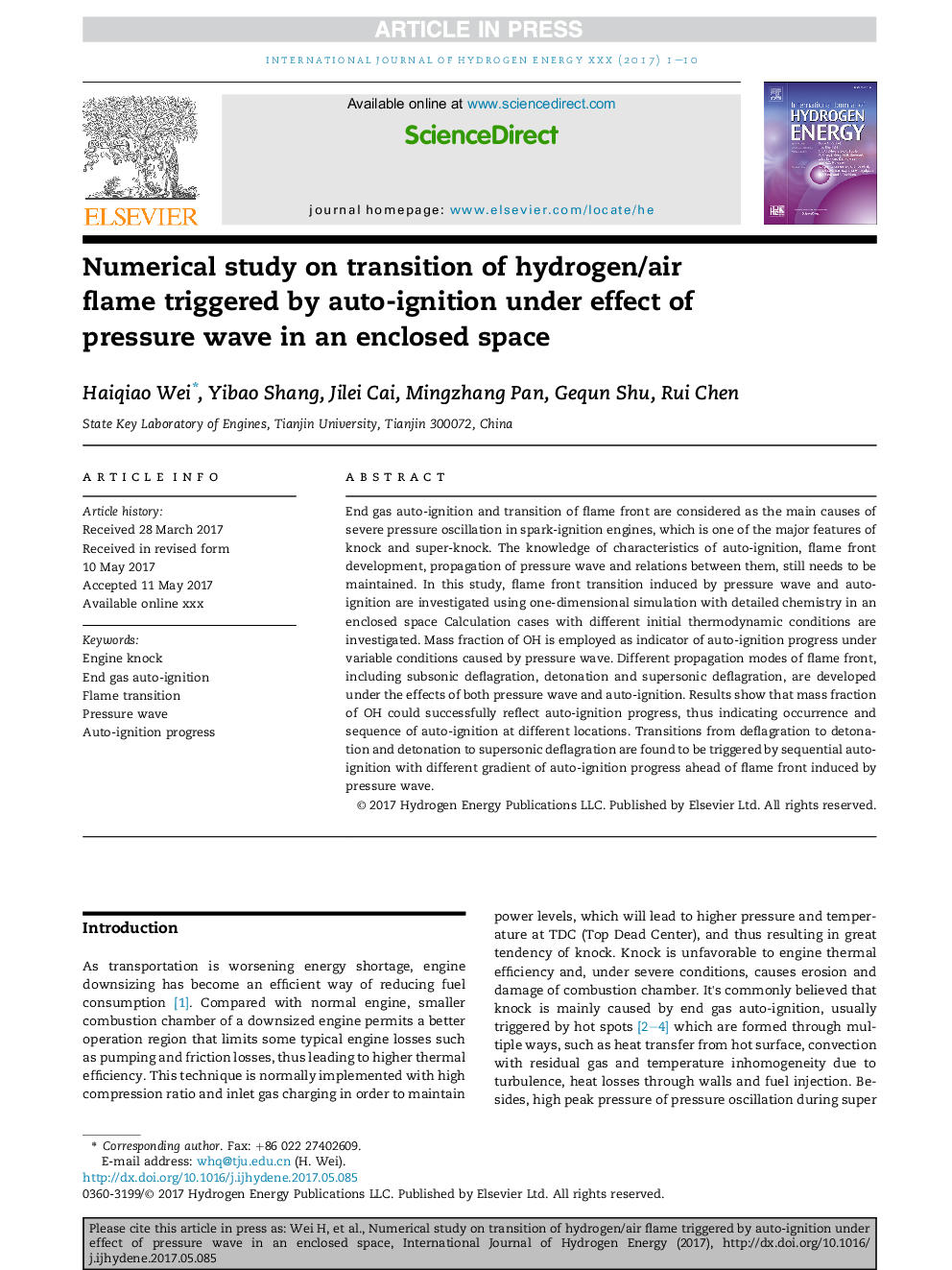| Article ID | Journal | Published Year | Pages | File Type |
|---|---|---|---|---|
| 5146446 | International Journal of Hydrogen Energy | 2017 | 10 Pages |
Abstract
End gas auto-ignition and transition of flame front are considered as the main causes of severe pressure oscillation in spark-ignition engines, which is one of the major features of knock and super-knock. The knowledge of characteristics of auto-ignition, flame front development, propagation of pressure wave and relations between them, still needs to be maintained. In this study, flame front transition induced by pressure wave and auto-ignition are investigated using one-dimensional simulation with detailed chemistry in an enclosed space Calculation cases with different initial thermodynamic conditions are investigated. Mass fraction of OH is employed as indicator of auto-ignition progress under variable conditions caused by pressure wave. Different propagation modes of flame front, including subsonic deflagration, detonation and supersonic deflagration, are developed under the effects of both pressure wave and auto-ignition. Results show that mass fraction of OH could successfully reflect auto-ignition progress, thus indicating occurrence and sequence of auto-ignition at different locations. Transitions from deflagration to detonation and detonation to supersonic deflagration are found to be triggered by sequential auto-ignition with different gradient of auto-ignition progress ahead of flame front induced by pressure wave.
Related Topics
Physical Sciences and Engineering
Chemistry
Electrochemistry
Authors
Haiqiao Wei, Yibao Shang, Jilei Cai, Mingzhang Pan, Gequn Shu, Rui Chen,
